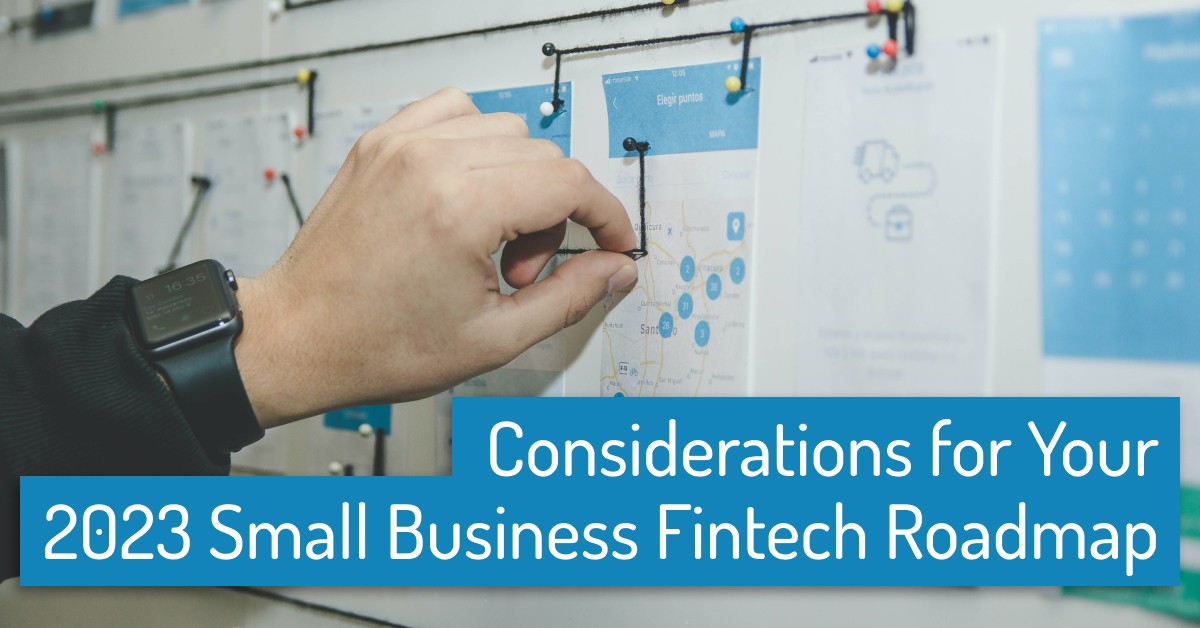Considerations for Your 2023 Small Business Fintech Roadmap

The fall business season is upon us once again. The kids are back in school, graduates have recently launched into adult lifestyles (aka working fulltime and paying their own bills), and small business owners are planning for what’s next. Considerations include growth initiatives, setting goals, and aligning their 2023 roadmaps.
For many recent grads, this is the time for planning and launching new businesses.
According to a recent survey by Intelligent, 60% of 2022 college graduates want to be their own boss, and 17% are already operating their own businesses even before graduation.
In 2015, Inc. magazine claimed we were entering the Greatest Era of Entrepreneurship and Small Business The World Has Ever Seen. The top reason or “game changer” they identified was micro-entrepreneurs, like the sole proprietors who sell items on Ebay, Amazon, and Etsy — entrepreneurs who are not well tracked.
Inc. was right. According to U.S. Census Bureau data, a record 5.4 million new businesses were formed in 2021. Before that, 2020 set a record with 4.4 million, and 2019 saw 3.5 million businesses formed.
All these new entrepreneurs and business owners have one thing in common: They never have enough time to get everything done. In fact, an NFIB study of small business owners showed the top three time-wasting activities were considered to be email, administrative tasks like billing and accounting, and interpersonal conflicts. Most respondents said what they’d rather be doing is spending time “on” their businesses, doing things like marketing, sales, PR, strategic planning, and developing new products and services.
Small business owners, and sole proprietors in particular, need to simplify everything — especially activities they consider to be a waste of their time.
Research conducted by some of Tight’s enterprise customers confirms what we’ve been hearing from our small business customers for years: From invoicing and expense tracking, to reporting and accounting, and all the way to taxes, small business owners need simplification.
Small business owners don’t have time to bounce from platform to platform to manage their finances. As I’ve said before, small business owners, including microbusiness owners, gig workers, and freelancers, want everything in one place.
Many fintechs and banks are finally coming around to understanding that offering only traditional core services isn’t enough to remain competitive. And they are perfectly positioned to be the one-stop solution small business owners want.
There are three ways to achieve a robust, one-stop financial platform that serves small business customers well: build it, buy it, or partner with a trusted API provider that offers the right features.
At Tight, we tell our enterprise clients to focus on what they do best and let us take care of those pesky but important administrative and accounting features that their clients require. Whether you want to create a premium product or you want to enhance your platform, Tight is the trusted partner that can make it happen without the kind of investment and risks that come with trying to build or buy everything small business customers might want.
What we’re currently hearing from our small business customers is that the services they want from a single source include invoicing, expense tracking, reporting, accounting, bookkeeping, and tax planning. And they want all of this on top of their core banking — in one place.
If you’re working on that 2023 roadmap for your bank, fintech or small business platform and are evaluating whether to build, buy, or partner, ping me. I’d be happy to discuss the pros and cons and tell you what I’ve seen and what to keep in mind.
We can help you create a premium product or add value for your end users by adding the Tight API to your current platform. The look and function can be seamless. With Tight as a partner, you get the customization of building and the efficiencies of buying — without the hefty upfront investment.










Disclaimer: The information contained in this document is provided for informational purposes only and should not be construed as financial or tax advice. It is not intended to be a substitute for obtaining accounting or other financial advice from an appropriate financial adviser or for the purpose of avoiding U.S. Federal, state or local tax payments and penalties.
Ready to Get Started?
Fill out the form below to set up a call.

